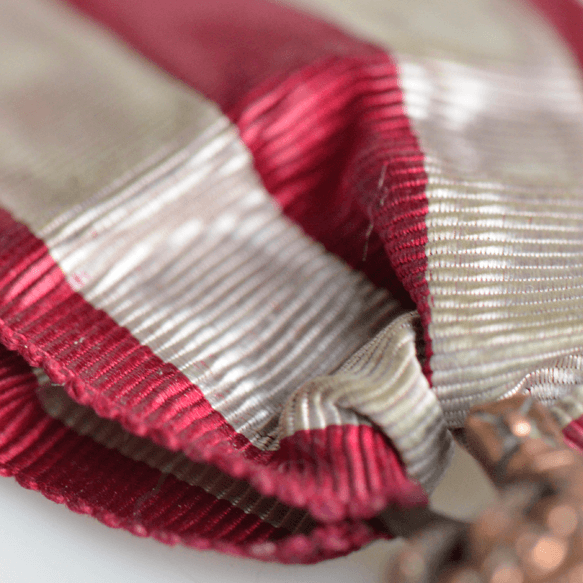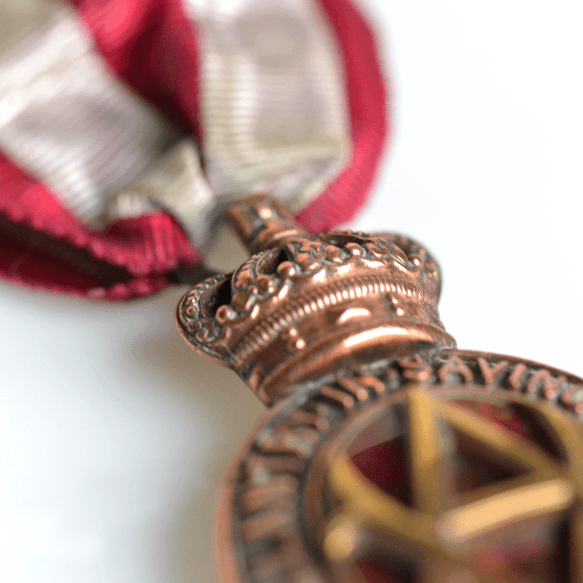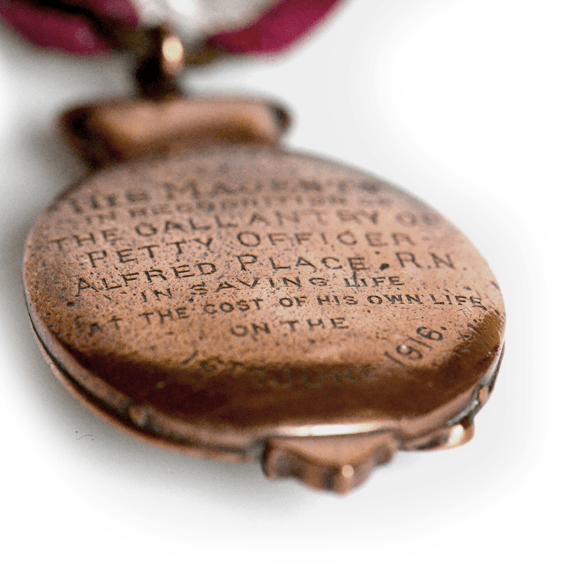Albert Medal
The Albert Medal is a British award given to recognise people who saved the lives of others. It was first awarded in 1866. From 1877 the Albert medal has had two forms - one to recognise saving life at sea and one on land. The medal was designed by Queen Victoria's husband Prince Albert. This medal was only awarded after the person had died saving a life.
The medal has a First and a Second Class, trying to distinguish different levels of bravery. During the First World War only 45 First Class and 290 Second Class Albert Medals were awarded.
The First Class was made of gold, the second bronze.


Ribbon View
The ribbon is crimson and white striped. The Second Class medal has five stripes, the First Class has seven.

Suspension View
The suspension extends directly from the crown, gathering the ribbon slightly.

Obverse View
The obverse has the letters V (for Victoria) and A (for Albert) linked together in a monogram, surrounded by the word 'For Gallantry in Saving Life on Land'.

Reverse View
The reverse has the details of the person the medal was awarded to hand-engraved. It reads: 'Awarded by His Majesty in recognition of the gallantry of Petty Officer Alfred Place RN in saving life at the cost of his own life on the 16th June 1916'.
Features View
From 1917 the First and Second Classes of Albert Medal were altered to The Albert Medal in Gold and The Albert Medal.

Albert Medal
The Albert Medal is a British award given to recognise people who saved the lives of others. It was first awarded in 1866. From 1877 the Albert Medal has had two forms - one to recognise saving life at sea and one on land. The medal was designed by Queen Victoria's husband Prince Albert. This medal was only awarded after the person had died saving a life.
The medal has a First and a Second Class, trying to distinguish different levels of bravery. During the First World War only 45 First Class and 290 Second Class Albert Medals were awarded.
The First Class was made of gold, the second bronze.
-

Ribbon
The ribbon is crimson and white striped. The Second Class medal has five stripes, the First Class has seven.
-

Suspension
The suspension extends directly from the crown, gathering the ribbon slightly.
-

Obverse
The obverse has the letters V (for Victoria) and A (for Albert) linked together in a monogram, surrounded by the word 'For Gallantry in Saving Life on Land'.
-

Reverse
The reverse has the details of the person the medal was awarded to hand-engraved. It reads: 'Awarded by His Majesty in recognition of the gallantry of Petty Officer Alfred Place RN in saving life at the cost of his own life on the 16th June 1916'.
-
Features
From 1917 the First and Second Classes of Albert Medal were altered to The Albert Medal in Gold and The Albert Medal.